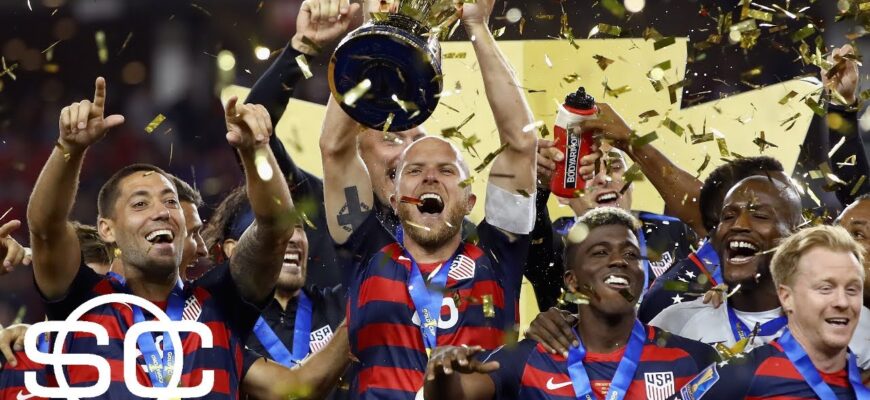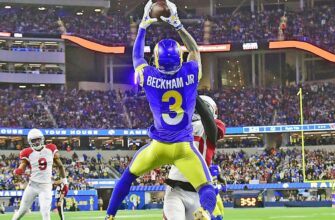As the footballing world turns its attention to the Concacaf region, the Gold Cup stands poised to deliver its usual blend of passion, unexpected upsets, and the relentless pursuit of regional supremacy. Beyond the immediate glory of lifting the trophy, this tournament carries a weightier significance, particularly for the nations gearing up to co-host the 2026 FIFA World Cup. It`s not just a championship; it`s a proving ground, a statement of intent, and perhaps, a subtle reordering of the established hierarchy.
Mexico: The Reigning Monarchs and Unquestioned Favorites
The perennial giants, Mexico, arrive at the Gold Cup as the defending champions and, unequivocally, the team to beat. “El Tri” has a well-deserved reputation for navigating Concacaf tournaments with a certain authoritative swagger, often finding ways to win even when not at their scintillating best. With a potent blend of experienced campaigners and emerging talent, their squad depth and tactical discipline make them formidable. The recent form of players like Raul Jimenez, who has demonstrated a remarkable resurgence as a clinical finisher, alongside the indispensable defensive midfield anchor Edson Alvarez, provides a solid backbone from attack to defense. Their path, while challenging, is certainly one they are expected to dominate, setting a high bar for any contender audacious enough to challenge their regional throne.
USMNT: A Period of Reassessment and Opportunity
In contrast to their neighbors, the United States Men`s National Team enters the tournament amidst a peculiar phase of self-reflection. With a notable contingent of their European-based stars either rested or unavailable, the USMNT roster presents a different look. This decision, while perhaps strategically sound for long-term player welfare, has certainly stirred conversations among supporters. It transforms the Gold Cup from a “must-win-with-everyone-available” scenario into a crucial opportunity for other squad members to step forward, to demonstrate their mettle, and to solidify their claims for future inclusion. It`s a chance for coach Mauricio Pochettino to experiment, to uncover hidden gems, and to build cohesion within a potentially less-heralded group. While a deep run might seem a lofty ambition compared to past iterations, the potential for individual breakthroughs and tactical revelations is significant.
Canada: The Northern Ascent
Long considered the “sleeping giant” of Concacaf, Canada has awoken with a renewed vigor that has seen them rise dramatically in regional standing. Their qualification for the 2022 World Cup marked a significant milestone, and they arrive at the Gold Cup with a clear ambition: to solidify their position among the elite. Their blend of athleticism, tactical intelligence, and a growing pool of talent playing in top European leagues makes them a genuine threat. The Gold Cup offers them another platform to demonstrate that their recent successes are not an anomaly but a sustained upward trajectory. A strong performance here would further validate their status as a legitimate challenger to the traditional dominance of Mexico and the US.
Beyond the Big Three: Dark Horses and Fading Glories
The Gold Cup, true to its nature, is rarely a two- or three-horse race. The tournament always produces compelling narratives from teams striving to make an impact. El Salvador, for instance, has quietly amassed a commendable unbeaten run leading into the competition, suggesting they could be the tournament`s true dark horse. Their improving form and tactical discipline might just be enough to upset more established nations, particularly in the unpredictable group stages. On the other end of the spectrum lies Costa Rica, a nation that, not long ago, boasted a “golden generation” capable of challenging any team. Now, they find themselves in a transitional period, grappling with the challenge of rebuilding while fending off hungry challengers. Their performance will be closely watched to see if they can rediscover their identity and avoid falling further into what some might term “Concacaf purgatory.” Even invited guests like Saudi Arabia, fresh off their stunning 2022 World Cup upset over Argentina, could introduce an unexpected dynamic, offering a unique tactical challenge to their Concacaf counterparts.
The Road to 2026: A Precursor to Global Ambitions
For the host nations of the upcoming 2026 World Cup—the United States, Canada, and Mexico—the Gold Cup serves as more than just a regional championship. It`s a critical barometer of their current standing, a laboratory for tactical experimentation, and an invaluable opportunity to build team chemistry and competitive resilience. The rivalries inherent in this tournament, the pressure of knockout football, and the demand for consistent performance against diverse opponents, all contribute to a learning experience that cannot be replicated in friendly matches. How these teams navigate the Gold Cup will offer significant clues about their readiness for the grand stage that awaits them in three years.
As the whistle blows to kick off the Concacaf Gold Cup, the stage is set for a captivating display of regional football. From Mexico`s quest for continued dominance to the USMNT`s strategic evolution, and Canada`s ambitious ascent, every match promises drama. The tournament is not merely a contest for a trophy; it`s a vibrant tapestry of narratives, where emerging talents clash with established titans, and every nation vies for its moment in the Concacaf sun. Prepare for an intriguing spectacle where skill, strategy, and sheer will converge.









